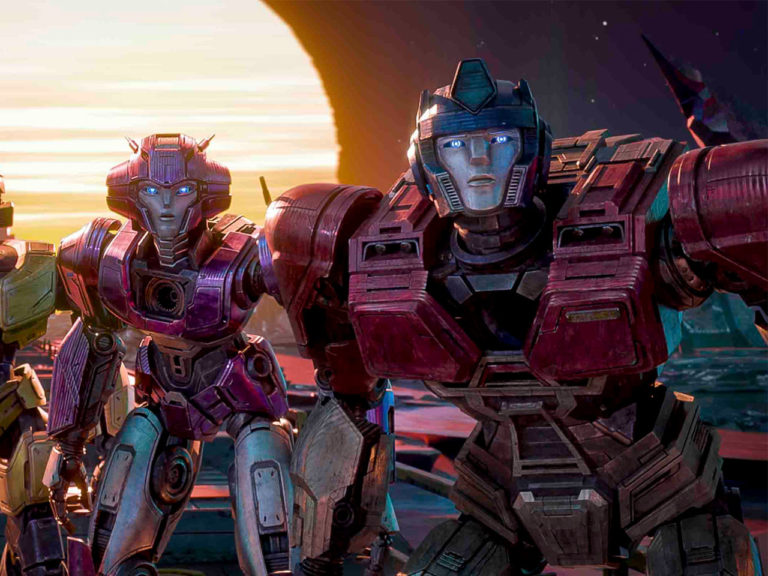

It’s easy to take advantage of it now, but there was once a time where our favorite superheroes rarely crossed paths, if ever. There weren’t line-spanning crossovers, monthly guest spots, or innumerable team-up books; instead, most characters stuck to their own titles, save for rare exceptions like World’s Finest.
Imagine, then, what it must have been like to see the cover of “The Brave and the Bold” #28, with five of your favorite heroes gathered in one place to fight a weird mind-controlling outer space starfish thing. Sure, you’ve seen Wonder Woman in comics before, and you’ve read plenty of individual Flash and Green Lantern adventures, but to see them together? United to take on one common threat? It’s easy to forget, but there was a time when this was a first for everybody, not just the individual.
Granted, the Justice Society of America predates the League by a good two decades and featured it’s own fair share of heavy-hitters, but the Justice League was noteworthy in that every character on the team was a proven tent-pole: Wonder Woman, the Flash, Green Lantern, Aquaman, and the Martian Manhunter, along with later additions Batman, Superman, and Green Arrow.
And… Snapper Carr. But we’ll get to him. Ohhh, we’ll get to him…
The Justice League of America: The Silver Age Vol. 1 contains the earliest adventures of the League, collecting “The Brave and the Bold” #28-30, “Justice League of America” #1-8, and “Mystery in Space” #75, each issue beautifully restored to give a new generation the chance to see where the legacy of the Justice League began.
Let’s get this out of the way up front: almost every one of these stories is legendary. They lay foundations for the DC Universe as a whole, introducing some of the team’s most enduring villains and building relationships between the characters that have evolved and endure to this day.
The problem is these stories are very much a product of their time, and for modern readers they may be tough to get through. The first adventure in “The Brave and the Bold” #28 manages to successfully juggle five characters as they fight a common foe, with the great Gardner Fox finding a formula where every character gets a fair shake in the proceedings. Aquaman feels like just as much a valid member of the team as Green Lantern or Martian Manhunter, and all Aquaman jokes aside that’s no mean feat. Fox creatively came up with a challenge that leveraged every League members’ strengths and weaknesses, countering one character’s vulnerability to fire with another character’s ability to communicate with sea life. It’s clever storytelling, and Fox must be applauded for that.
Unfortunately, that same thing could be said of pretty much every story here, as everything quickly falls into formula: Green Lantern always happens upon an obstacle that conveniently contains the color yellow, or something always catches on fire whenever J’onn J’onzz is around. I wasn’t kidding when I said these stories could be difficult to get through, not because they’re bad but because they’re so samey.
Also, get used to reading that orange box there:

Superman and Batman are featured throughout the book, though mostly in supporting roles and, more often, involved in adventures that occur off panel. It’s understandable why they aren’t given as much of a focus: from the publisher’s beginning Superman and Batman have been the two biggest names, so focusing on characters with just as much history but not quite as much recognition is a smart play. Like the storytelling contrivances, though, it kind of wears on you when Batman and Superman “just so happen” to be off doing other things.
Not all is hopeless, though. In their stead, we have another character. A hero unlike any other. A true beacon of hope and yeah you know what? I can’t do it.
If you don’t know him, meet the League’s honorary member: Snapper Carr.

He’s an obnoxious teenager who happened to help the League defeat Starro. And he snaps a lot and speaks that Fifties jive.
Truly, Snapper is the Wesley Crusher of the Justice League.
Alright, that’s enough negativity. While the book is very formulaic, it’s also from a completely different time. Plus, none of the stories are really bad at all, even the one where Earth is swapped with a counterpart from a magical dimension that just happens to have the same land masses and continental structures.

…that… that’s actually amazing. Forget I even implied that it’s bad; these are the stories writers need to be telling today.
Part of the charm of the book is its goofy innocence and complete lack of cynicism. Quite a bit of the dialogue comes across as corny and/or silly more often than not, but again, it’s just a product of its time. Books from ten years ago can sound dated depending upon the context and writing style, so it’s no surprise that fifty-five-year-old stories don’t read like they were written yesterday either. Reading the whole volume in one sitting may not be easy, but popping in now and then to enjoy the heroic optimism from yesteryear makes these scripts worthwhile.

If the storytelling can be a bit cornball and dated, some of the concepts introduced are timeless. Of the twelve stories in the collection, five of them introduce villains who are still well-known today, and one of whom appears in two separate issue herein. Starro the Conqueror is the first threat the League faces, threatening Earth with his mind-controlling starfish minions.

In addition to Starro, the League tussles with Amazon, the robot that has all of the super powers:

Despero, a would-be tyrant whose third eye can hypnotize his prey:

Kanjar Ro, who has weird bug eyes and is kind of dumb uses a special bell to conquer entire planets:

And Doctor Destiny, who would one day become one of the most legitimately terrifying villains in all of comics.

If the stories themselves don’t stand out, they at least provide a foundation for decades of lore and mythology to be built upon. And really, taken individually each story is fine; in fact, there are a few instances where Fox adjusts the basic storytelling formula even if he never truly strays from it. “Mystery in Space” #75 is a Kanjar Ro story that follows… another Kanjar Ro story, but what makes it noteworthy is the inclusion of Adam Strange. Strange is one of those great, high-concept characters from the Fifties, likely created to capitalize on the “space craze” of the decade. He isn’t just a spaceman, though: he’s an Earth-born archeologist who gets transported to the plant Rann via Zeta Beam and becomes a champion and falls in love with an alien lady. The beam’s effects eventually wear off and he’s transported back to Earth, but he uses math to calculate when and where more Zeta Beams will reach Earth so he can return to Rann and wear his sweet spacesuit and jetpack.
Adam Strange is awesome, is what I’m getting at.
The story he’s included in follows the same basic beats as the one immediately preceding it, but the addition of a guy like Strange brings in an interesting dynamic: Strange wants to help the League because it’s the right thing to do, yet he also has his own reasons for wanting to defeat Kanjar Ro. The broad strokes and the outcome are largely the same, but there’s enough there that’s different that makes that story stand out among the others.
The visual restoration by Rick Taylor, Rick Keene, Tom McCraw, Stuart Chaifetz, and Jamison looks absolutely stunning, giving vibrant life to the pencils of Mike Sekowsky and Carmine Infantino. Like the plotting, the illustrations are certainly a product of their time, but Sekowsky and Infantino certainly knew how to work around the limits of the era. Sekowsky is the artist on all but one of the issues included, and even when presented with the overly crowded panels that were indicative of the time, he still manages to turn in some truly excellent work. Sure, the figures are often stiff or have awkward poses, but his proportions and unique facial characteristics make each character stand out from the others.

A lot of the designs for the villains are relatively timeless as well, especially Starro and Amazo who would remain practically unchanged over the next fifty years. Despero may have gotten bigger and more ferocious over time, but there’s no mistaking the pink-hued, three-eyed despot for anyone else. They’re great designs, and they’re timeless designs.
Infantino penciled the “Mystery in Space” story with Adam Strange, and it’s great work from an absolute legend. Like Sekowsky, he had to work within certain limits and the parameters of publishing of the time, yet he too makes the most of it. The two artist’s styles are similar enough as to not be jarring when the shift takes place, yet different where it counts. Infantino was truly visionary, and some of the visuals in his issue are absolutely trippy and weird. I loved it.
Side note: there’s a Tales of the Batman collection featuring a lot of Infantino’s work and it alternates between fantastic and completely bonkers. There’s a story where Batman and Robin fight a lightning-powered caveman trapped in a block of ice, and another where they fight an explosive gorilla. If I didn’t have you at “explosive gorilla,” then I don’t know what else to say. Either way, the collection is kind of expensive, but worth it if you want to read some Batman comics from one of the strangest eras for the character.
Individually great, collectively kind of samey, I still dare you to read one of these stories and not be inspired by the Justice League shield that caps every one off.

Bonus features: Besides the chance to own some historic comics, nothing. The packaging sure is nice, though.
Value: It’s an attractive collection that’s worth reading for historical significance alone, and the restoration of the art is just stunning. While it probably doesn’t hold a lot of re-read value, save for an occasional thumbing-through, it can be purchased new on Amazon for around $13, which is more than worth it.
Additional reading: Pretty much every character has at least one book running right now, and of course Justice League is a mainstay in the DC publishing stable. If you want something a little more offbeat, though, I’d highly recommend the Death of Hawkman miniseries running right now. The second issue was released this past Wednesday, and it’s a really solid, enjoyable read. Hawkman has been an off and on member of the League over the years, but even more relevant is the mini’s focus on Adam Strange. In fact, I’d go so far as to say it’s just as much an Adam Strange story as it is a Hawkman story, if not more so. Written by Marc Andreyko and illustrated by Aaron Lopresti, Death of Hawkman is an intriguing tale of war, revenge, and the lengths men will go to just to ensure justice is served. Despero is also shaping up to be a major player in it, which just further goes to show how timeless and influential these stories are.
Overall: A respectable collection that is more noteworthy for its historical significance than for groundbreaking storytelling, this is still a book that any comics fan should at least be familiar with. So much of DC’s history over the past fifty years stems from these stories, and each has its own charm that makes them worth reading at least once. The Justice League of America: The Silver Age is an affordable collection that makes for a rewarding read, even if you only read it once.
SCORE: 6/10


